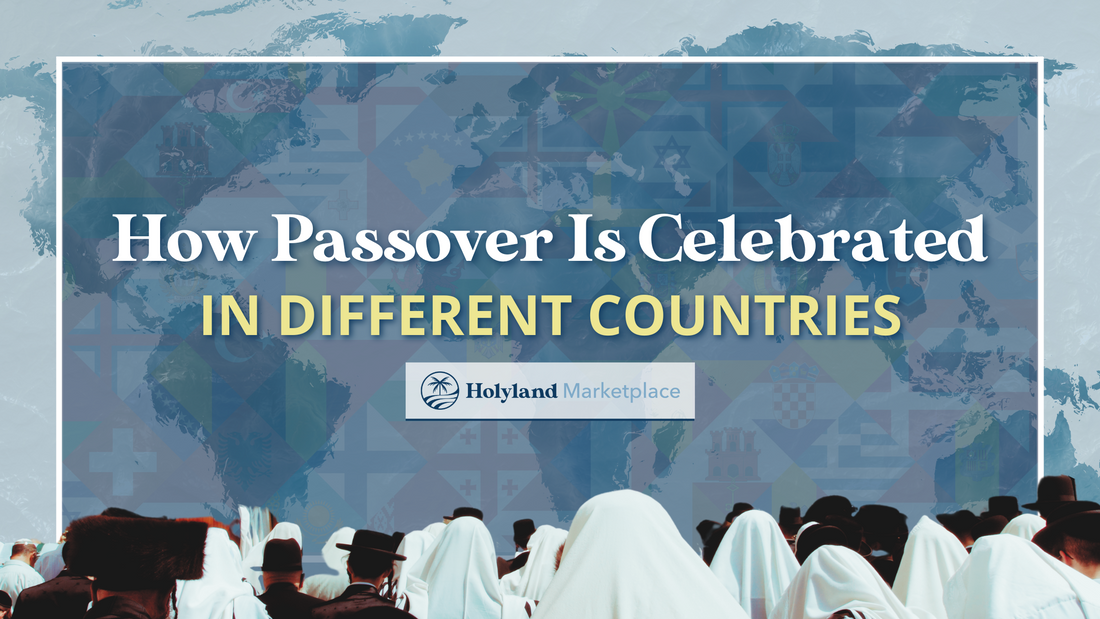
How Passover Is Celebrated In Different Countries
Share
As a result of the Diaspora, many Jewish communities have been established around the world. Despite many persecutions throughout the centuries, these communities are thriving today. While many of their core beliefs are the same, the geological differences have produced a variety of customs, especially regarding the Passover feast in particular. Read on to learn about many of the unique Passover traditions around the world, from Morocco to Poland.

Ethiopia
According to Exodus 12, every of chametz (leaven) is to be removed from the home. Ethiopian Jews take it a step further and break all of their earthenware dishes since leaven from the past year has touched them. They then make or buy new dishes for the coming Passover and use them for the rest of the year. Another distinguishing factor is that Ethiopian families do not read from the Haggadah (a booklet that lists the order of the Passover meal), but instead directly from the Torah.
Yemen
Yemenite Jews are one of the only Jewish communities that make a different kind of matzah. Theirs is soft like pita bread or naan, instead of the familiar crackers that are used in many Passover meals. It is also said that theirs is actually the closest to the matzah that that israelites ate before their hasty departure from Egypt. This is unsurprising considering that Yemen is relatively close to Israel.
Iran and Afghanistan
Part of the Passover ceremony includes singing the Dayenu, a song listing the miracles and blessings Adonai performed for the people of Israel. During the song, Iranian and Afghan Jews will use scallions (or leeks) and gently whip the other friends and family members around the table. This is to represent the overseers beating the slaves in Egypt.
India
In addition to the traditional four cups of wine, Indian Jews add another for Pharoah, the antagonist of the exodus account. One cup is filled, and then poured into another until it has made its way around the table. This is how people around the table show their disdain for Pharaoh; this action signifies also Pharoah's power lessening over the course of the ten plagues.
Poland
Jewish tradition states that the Israelites did not arrive at the Red Sea until the seventh day after their departure from Egypt. In Poland, on the seventh day of Passover, Jewish families pour water on the floor and walk through it, to represent the Israelites crossing through the Red Sea.
Hungary and Austria
In Exodus 3, Adonai commands the Israelites to ask their Egyptians neighbors for silver and gold. In Hungary and Austria, the Jewish women take their jewelry and decorate the seder table in remembrance of the Israelites plundering the Egyptians.

Spain
One fun element of Passover is finding different ways to utilize matzah throughout the week. In Spain, Jews make a dessert called bimuelos. Although they are typically eaten during Hanukkah, the Spanish have made their own Passover version. They are doughnuts made of matzo, topped with nuts, and are eaten with syrup.
Another unique Passover tradition originated in 14th century Spain: whoever is leading the seder will walk around the table three times and tap the heads of all those who are participating in the Passover meal while reciting a blessing over them.
Gilbraltar
Typical Passovers that are celebrated today often include additional food items besides the lamb, unleavened bread (matzah), and bitter herbs mentioned in the Torah. One of these items, charoset, is comprised of fruit and nuts and symbolizes the mortar the Israelites used for construction in Egypt. Jews in Gilbraltar increase the authenticity of their charoset by adding a small amount of powdered bricks.
Morocco
In Morocco, a celebration called Mimouna marks the end of Passover. Since eating leavened foods is permitted again, families and friends gather in their homes to partake in a variety of desserts. Although this celebration originated in Morocco, it has spread to many other countries that also hold the Passover feast. While it may not be the most healthy, it is certainly a sweet tradition.
Hopefully, you've learned something new, and as you now have seen, part of the fun of Passover is making it your own. While we prepare for this coming Passover, let's think of our brothers and sisters are simultaneously getting ready for their own seders. Although many differ in their methods of celebration, the feasts of Adonai unite us all worldwide as we gather in remembrance of the mighty works God has performed.

